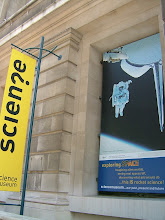As one turns the scale to the atom level, the behavior of a particle becomes very unpredictable. Quantum mechanics has a better description of microscopic properties than classical mechanics for this scale. It brings us the most precise and successful numerical predictions in the history of science. But a contradiction accompanied with the development of quantum mechanics was brought to light, and has been queried from realists. It is certain that the probabilistic interpretation contravenes the law of causality, and is unable to delineate the fundamental physical process of the universe. According to quantum mechanics, measurements of some properties, such as a particle's momentum for example, can yield a range of possible results with varying probabilities. In other words, the objective physical process, once physicists took it for granted to possess definite properties that suitable observations can reveal, is no longer adaptable in the microscopic world.
The need for a more complete theory is revealed as our understanding of the physical universe has deepened profoundly, and, in particular, as the desiderative exploration of the very beginning of our universe has been carried out. One of the possible theories is the “hidden variable theory” proposed by D. Bohm
The main purpose of this article is to explore the process of visualizing hidden variables, and to represent a complete theory within microscopic physics. One can imagine that there is a bee in a house with no window. The bee has a special power allowing it to pass through walls to go outside. Of course, we cannot see the bee while it stays outside the house and we are inside. It can only be seen after passing through the wall and coming back into the house again. Hence, what we can observe is that the bee appears all of a sudden and disappears later if it passes in and out of the house. In such a condition, we have no idea about when it will come back to the house for the reason that we cannot see anything outside the house, but what we can do is to estimate the probability of being stung by the bee according to the position we are in inside the house. This is the probabilistic interpretation proposed by quantum mechanics to describe a quantum system.
On the other hand, let us replace all the walls of the house by transparent glass then there will be no doubt that we can see everything outside the house as we stay inside. Now, we still can observe where the bee is and even how it moves after it is passing through the glass wall to go outside. There is no problem for us to predict its flight path, position, velocity and heading. In other words, we can be told when and where the bee comes back into the house in a deterministic way, without estimating the stinging probability. A contrast can be made here that transparent walls symbolize the visualization process; it can reveal motions of the bee outside the house in the former case in an objective physical process. Consequently, a continuous and deterministic interpretation of the quantum world can arise if we can find some method of replacing the invisible border.
It is straightforward to think of extending dimension to bring transparent walls into existence. To deliberate on the imperceptible part to the sense at quantum level, a rational speculation of complex domain could strike a bargain, in which its imaginary part can represent the invisible world. In fact, it is not an unrestrained attempt originated from an intuition only. The complex concept was objective in Schrodinger’s equation and can be made aware of by the appearance of the imaginary factor “i”, and has been permitted as a genuine mathematical tool. In fact, the ignoring of the imaginary sign in wave mechanics can be attributed to practical experimental results, which cause people’s attention to delve into the atom scale. Owing to the limited observable dimension, imaginary features of nature which could dissolve the consequence of experiments has been eliminated by empiricists. However, no thorough canvass can be addressed if our understanding of nature contains a one-legged version of the full view. This is the main reason why quantum mechanics is an incomplete theory, for its grounds for existence lie on observation that has been criticized from the philosophical aspect and the causality of its nature.
In pioneering work approaching causal quantum physics, a remarkable achievement based on the complex concept has been proposed by C. D. Yang
One of the most elusive parts of this causal quantum physics, or so-called quantum
Therefore, the wave function decided by Schrodinger’s equation describes a particle’s motion statistically and cannot provide more detail about each trajectory. It is clearer to think of it as a water flow; since we cannot know a specific molecule’s motion by observing its whole flow, and can only understand the probability of this molecule passing by a specific area. This is the limitation of describing a quantum motion based on wave mechanics since it provides a macroscopic observation which cannot be overlooked. On the contrary, a fully informative view of a particle’s motion can be presented in terms of causal description from the same wave function. We can observe a specific particle’s motion with the help of quantum
E-mail: ngcmars@gmail.com
Reference
physical reality be considered complete?, Physical Review, 47, 777 (1935).
Reprinted in Quantum Theory and Measurement, p. 139, (1987).
2. Bohm, David. "A Suggested Interpretation of the Quantum Theory in Terms of
"Hidden Variables" I". Physical Review 85: 166-179. (1952).
3. R.P.Feynman: Space-Time Approach to Non-Relativistic Quantum Mechanics, Rev.
Mod. Phys. 367, (1948).
4. C. D. Yang, Quantum Hamilton mechanics:
5. C. D. Yang, Wave particle duality in complex space, Ann. of Phys., 319, 444-470 (2005).
6. C. D. Yang, On Modeling and Visualizing Single-Electron Spin Motion, Chaos, Solitons, & Fractals, 30, 41 -50, (2006)








